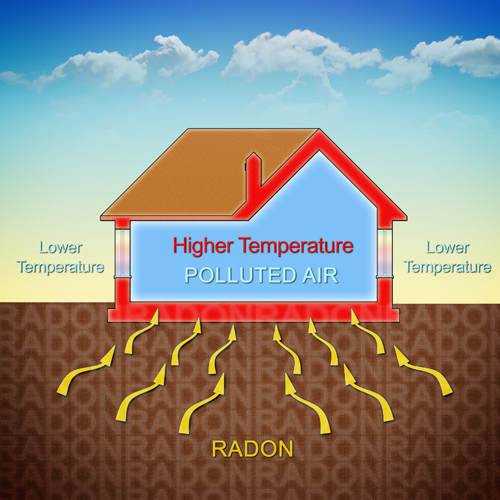FREQUENTLY ASKED QUESTIONS
These are our most frequently asked questions. Don't see your question? Please be sure to contact us with your question.
Tests should be placed in areas that are used frequently, like a basement family room. Duplicate testing (two test vials), should be exposed in the same area in order to get an average of both test vials. You should not place one test vial in the basement, and another test vial on the first floor living space to get an average of the two. Avoid testing in bathrooms and kitchens because moisture and severe temperature changes can adversely effect the test.
Although, Radon testing is most commonly performed during a routine home inspection during a Real Estate transaction, every homeowner should test their home for Radon Gas. If possible, Radon Air testing should not be conducted during severe, adverse weather conditions, due to the increase in the outdoor atmospheric pressure, in relation to the homes’ indoor air pressure. If you do not already have an “active” radon air system installed in your home, you should test for Radon every year. If your retesting to insure that your “active” Radon system is still working, a retest every two years is fine.
Radon is a radioactive gas that is found throughout the United States and the World. It is odorless, tasteless and colorless. Radon gas comes from the decomposition of Uranium and Radium within the soil from under the home. Radon occurs naturally.
Radon is drawn into the home through cracks in the foundation walls and concrete floor of the basement due to pressure differentials between the soil and the home. When Radon Gas is present in the water supply, it will off-gas into the air during normal domestic water usage. Testing your homes’ indoor air & water supply is the only way to find out if your home as a Radon issue.

The Environmental Protection Agency currently recommends that levels at the “action level” of 4.0 pCi/L or above, should be addressed and action should be taken to reduce the radon levels.
The cost of installing an active Radon system will vary with the type of structure and locality. Various system vent pipe routes and/or the potential for multiple suction points will determine the cost of installing an Active Radon Mitigation System. Many other factors, like accessible Crawlspaces, Floor Drains and Sump Pump Holes, are also contributing factors.
Arsenic is a natural element that can be found in rocks and soil, water, air, and in plants and animals. People can also be exposed to arsenic in the environment from some agricultural and industrial sources.
Arsenic occurs naturally in the environment. We normally take in small amounts in the air we breathe, the water we drink, and the food we eat. People can also be exposed to arsenic in some other ways, such as in some man-made products. Too much can be bad for our bodies, but there are simple things we can do to avoid too much arsenic.
Currently, the most effective method for removing arsenic from a private water supply appears to be reverse osmosis, commonly called RO. RO can be thought of as filtration at a molecular level. It works by forcing water through a special, selective membrane. Call us today to get a free quote.
If your water is too acidic, a neutralizer can bring the water’s pH to a more neutral level. Acidic water can be a real problem for your home’s plumbing. It may cause corrosion of metal pipes, blue-green staining, dry hair and skin, and the leaching of metals like lead into your water.
If your water is too hard, it becomes difficult to get any suds. A water softener can help with this problem. Further, the activated carbon reduces chlorine and other unwanted tastes while the high capacity resin softens the water.
 Radon is only a problem in homes with basements.
Radon is only a problem in homes with basements.